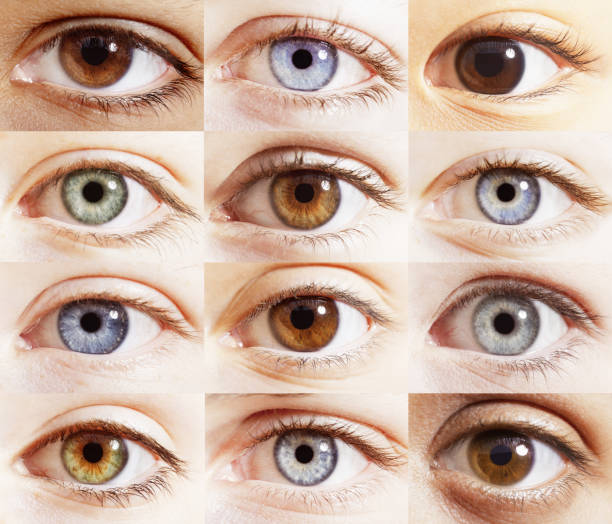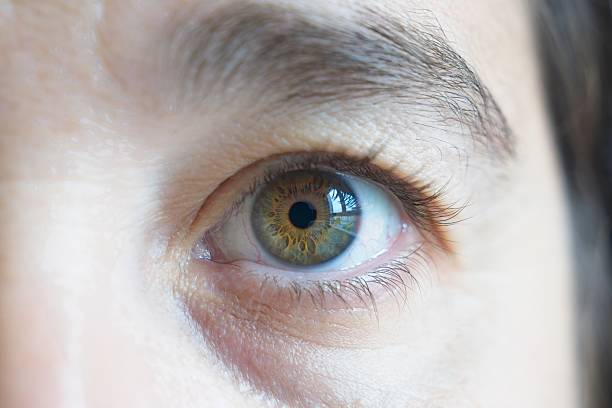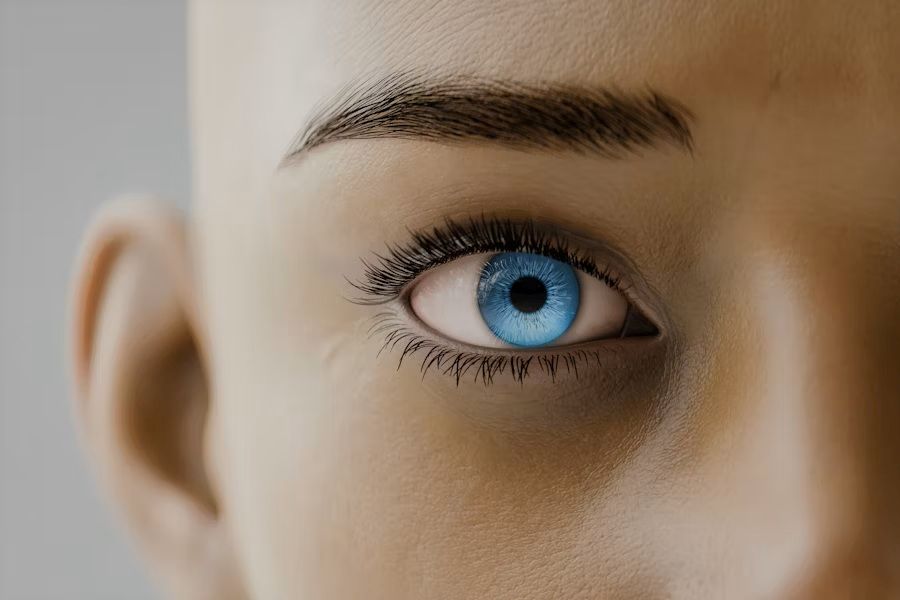Your Cart is Empty
Unveiling the Secrets of Iris Colors: What Your Eyes Reveal About You

The color of your iris is more than just a physical trait; it can offer fascinating insights into your personality, health, and heritage. In this comprehensive guide, we will explore the science behind iris colors, their meanings, and what they reveal about you. From common hues to rare shades, we will delve into the world of iris colors and their significance.
The Science Behind Iris Colors
The color of the iris is determined by a complex interplay of genetic, biological, and environmental factors. Let's explore the science behind this fascinating trait.
Genetic Factors
Iris color is primarily influenced by genetics. The two main pigments responsible for eye color are melanin and lipochrome. Melanin, which is also found in skin and hair, contributes to brown and black hues, while lipochrome is responsible for lighter shades like blue and green. The amount and distribution of these pigments are determined by several genes, with the OCA2 and HERC2 genes playing significant roles.
Biological Factors
The structure of the iris itself also plays a role in determining eye color. The stroma, a layer of connective tissue in the iris, can scatter light in different ways, leading to variations in color. For example, blue eyes have less melanin in the stroma, allowing more light to be scattered and creating the appearance of a blue hue.
Environmental Influences
While genetics are the primary determinant of iris color, environmental factors can also have an impact. Prolonged exposure to sunlight can stimulate melanin production, potentially causing the iris to darken over time. Additionally, certain medications, such as those used to treat glaucoma, can cause changes in iris pigmentation.
Common Iris Colors and Their Meanings
Now that we understand the science behind iris colors let's explore the most common hues and what they traditionally signify about a person's traits and characteristics.
Brown Eyes
Brown is the most common iris color worldwide, with over 55% of the global population having brown eyes. People with brown eyes are often perceived as reliable, dependable, and grounded. The higher melanin content in brown eyes also provides better protection against UV rays, reducing the risk of certain eye conditions.
Blue Eyes
Blue eyes are the second most common iris color and are often associated with calmness, trust, and friendliness. The lower melanin content in blue eyes makes them more sensitive to light, which may explain why people with blue eyes are more likely to experience photophobia or light sensitivity.
Green Eyes
Green eyes are relatively rare, occurring in only about 2% of the global population. This unique hue is often linked to creativity, passion, and mystery. The distinctive color of green eyes is caused by a combination of melanin and lipochrome, with the Rayleigh scattering of light contributing to the green appearance.
Hazel Eyes
Hazel eyes are a captivating blend of brown, green, and gold, often appearing to change color depending on the lighting and surroundings. This dynamic quality is associated with versatility, adaptability, and a love for adventure. Hazel eyes are more common than green eyes but still relatively rare, occurring in about 5% of the population.
Rare Iris Colors and Their Significance
While brown, blue, green, and hazel are the most common iris colors, there are a few rare shades that are equally fascinating. Let's explore these unique hues and what they might indicate about an individual's genetic makeup and health.
Amber Eyes
Amber eyes are a striking golden or coppery color, caused by a higher concentration of lipochrome and a lower amount of melanin. This rare hue, found in less than 1% of the population, is often associated with warmth, confidence, and a strong connection to nature. Amber eyes are most common in people of Asian, Spanish, or South American descent.
Gray Eyes
Gray eyes are even rarer than amber eyes, occurring in less than 1% of the global population. This cool, mysterious hue is caused by a very low amount of melanin in the iris, combined with the Rayleigh scattering of light. Gray eyes can appear to change color depending on the lighting and surroundings, a quality that is linked to adaptability and intelligence.
Red and Violet Eyes
Red and violet eyes are extremely rare and are usually caused by albinism, a genetic condition that affects melanin production. People with albinism often have very pale blue, gray, or pinkish-red eyes due to the lack of pigment. While these unique eye colors are visually striking, they can also be accompanied by vision problems, such as photophobia and nystagmus.
Health Indicators in Iris Colors
Beyond their aesthetic appeal, iris colors can also provide valuable insights into an individual's health and genetic predispositions. Let's explore some of the medical aspects of iris color.
Genetic Disorders
Certain iris colors can be indicative of genetic disorders. For example, pale blue eyes are more common in individuals with Waardenburg syndrome, a rare genetic condition that affects pigmentation and hearing. Similarly, red or violet eyes can be a sign of albinism, which impacts melanin production throughout the body.
Eye Health
Iris color can also offer clues about eye health. People with lighter eyes, such as blue or gray, are more susceptible to certain eye conditions, including macular degeneration and cataracts. This increased risk is due to the lower levels of melanin in the iris, which provides less protection against UV radiation.
Systemic Health
In some cases, changes in iris color can signal underlying systemic health issues. For instance, a sudden change in iris color, particularly a noticeable lightening or darkening of one eye, can be a sign of Horner's syndrome, a condition affecting the nerves that control the eye and facial muscles. Additionally, the presence of Kayser-Fleischer rings, a brownish or greenish ring around the iris, can indicate Wilson's disease, a rare genetic disorder that causes copper to accumulate in the body.
Iris Art and Photography
The intricate patterns and vibrant colors of the iris have long been a source of inspiration for artists and photographers alike. In this section, we will explore the world of iris art and eye photography, offering tips and techniques for capturing and creating stunning visual representations of the eye.
Iris Photography Tips
Photographing the iris can be a challenging but rewarding endeavor. To capture the intricate details and vibrant colors of the eye, consider the following tips:
-
Use a macro lens to zoom in on the eye and capture fine details
-
Ensure proper lighting, either with natural light or a ring light, to evenly illuminate the iris
-
Use a tripod or stabilize your camera to avoid blurriness and achieve sharp focus
-
Experiment with different angles and perspectives to showcase the unique patterns of the iris
Iris Art Techniques
Creating art inspired by the iris allows for endless creative possibilities. Some popular techniques for iris art include:
-
Watercolor painting: Build up transparent layers to create depth and dimension
-
Digital art: Use software like Adobe Photoshop or Procreate to create detailed, realistic renderings
-
Mixed media: Combine various materials, such as ink, acrylic paint, and colored pencils, to create a textured, dynamic piece
-
Embroidery: Use thread to stitch intricate patterns and colors, mimicking the natural beauty of the iris
By exploring these artistic techniques and experimenting with different mediums, you can create stunning visual tributes to the captivating beauty of the human eye.
Cultural and Historical Perspectives on Iris Colors
Throughout history and across cultures, iris colors have been imbued with various meanings and associations. Let's examine how different societies have interpreted and valued iris colors over time.
Ancient Beliefs
In ancient Egypt, blue eyes were considered a sign of divinity and were often depicted in artwork and hieroglyphs. The ancient Greeks also associated blue eyes with the gods, believing that people with blue eyes were blessed with divine favor. In contrast, the ancient Romans viewed blue eyes as a sign of barbarism, associating them with the Germanic tribes they encountered.
Modern Interpretations
In contemporary Western culture, blue eyes are often associated with beauty, innocence, and trustworthiness. Brown eyes, on the other hand, are linked to warmth, dependability, and strength. Green eyes are frequently seen as mysterious and alluring, while hazel eyes are associated with uniqueness and adaptability.
Cultural Variations
Perceptions of iris colors can vary significantly across cultures. In some Asian societies, lighter eyes are considered exotic and desirable, as they are less common among Asian populations. In contrast, some African cultures place a higher value on darker eyes, associating them with depth, wisdom, and spiritual power.
Understanding these cultural and historical perspectives on iris colors can help us appreciate the diverse ways in which human eye color has been interpreted and celebrated throughout time.
Changing Iris Colors: Myths and Facts
There are many myths and misconceptions surrounding the idea of changing iris colors. In this section, we will address common beliefs and provide scientific explanations for if and how iris colors can change over time.
Common Myths
One prevalent myth is that iris color can change dramatically based on mood or emotion. While the pupil size can change in response to emotional states, the actual color of the iris remains constant. Another myth suggests that iris color naturally changes with age, but this is not entirely accurate. While subtle changes may occur over time, significant color shifts are rare.
Scientific Explanations
Iris color can indeed change slightly over time, but these changes are typically gradual and subtle. Factors that can influence iris color include:
-
Age: As we get older, the amount of melanin in the iris may decrease, leading to a slight lightening of eye color.
-
Trauma: Injury to the eye, such as a penetrating wound or severe inflammation, can cause changes in iris color.
-
Medications: Certain medications, particularly those used to treat glaucoma, can cause the iris to darken over time.
-
Medical conditions: Rare genetic disorders, such as Waardenburg syndrome or Horner's syndrome, can cause noticeable changes in iris color.
Anecdotal Evidence
There are numerous anecdotal reports of people claiming to have experienced significant changes in their iris color. While these stories are intriguing, they often lack scientific verification. If you notice a sudden or dramatic change in your iris color, it is essential to consult with a medical professional to rule out any underlying health concerns.
Personal Stories and Experiences
To gain a more personal perspective on the significance of iris colors, let's hear from individuals with unique or rare eye colors.
Interview with an Amber-Eyed Individual
"I've always been fascinated by my amber eyes. Growing up, I didn't know anyone else with this eye color, and it made me feel special. People often comment on how unique and beautiful they are, which is a great conversation starter. I feel like my eye color is a reflection of my warm and confident personality."
A Gray-Eyed Perspective
"Having gray eyes has been an interesting experience. Depending on the lighting and what I'm wearing, my eyes can appear blue, green, or even silver. It's like having a built-in accessory that always matches my outfit! I've also found that my eye color seems to evoke a sense of mystery and intrigue in others."
Living with Albinism
"Being born with albinism, my pale violet eyes have always been a part of my identity. While my eye color is visually striking, it also comes with some challenges, such as photophobia and reduced visual acuity. Despite these difficulties, I've learned to embrace my unique appearance and use it as an opportunity to educate others about albinism."
These personal stories remind us that iris color is more than just a physical characteristic; it is an integral part of our identity and how we experience the world.
Conclusion
The color of your iris is a fascinating window into your genetic makeup, health, and cultural heritage. By exploring the science behind iris colors, their meanings, and their significance, we gain a deeper appreciation for the incredible diversity of the human eye.
Whether you have a common iris color like brown or blue, or a rare shade like amber or gray, your eyes tell a unique story. Embracing and celebrating your iris color can be a powerful form of self-expression and a reminder of the beauty and complexity of the human experience.
As we continue to unravel the secrets of iris colors, we open up new avenues for scientific research, artistic exploration, and cultural understanding. So the next time you gaze into someone's eyes, take a moment to appreciate the fascinating world of color and meaning that lies within.
Leave a comment
Comments will be approved before showing up.




